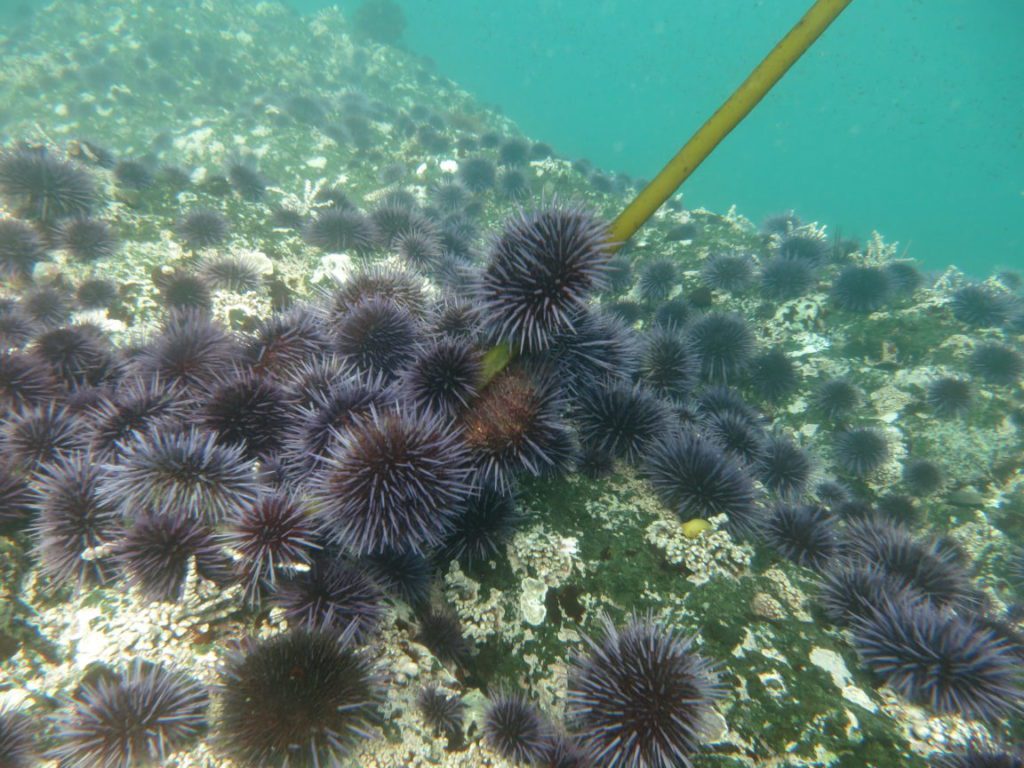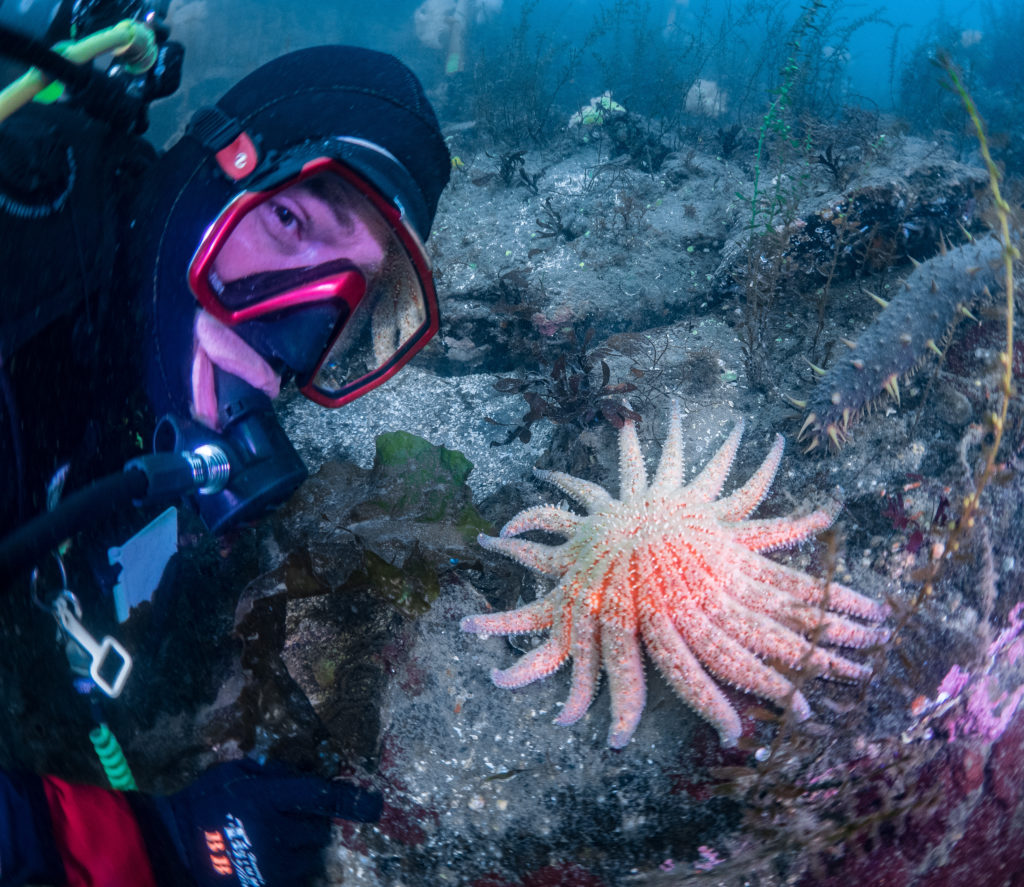Kelp Grazers Out of Balance
Two species of sea urchins dominate the inter-tidal and sub-tidal reaches of Oregon’s nearshore; the red sea urchin (Mesocentrotus franciscanus) and the Pacific purple sea urchins (Strongylocentrotus purpuratus). Why is the Pacific purple sea urchin threatening kelp in Oregon, and are there any solutions?
Urchin Barrens
The red sea urchin is the primary species used in the commercial “uni” market, and is often described as a “passive” forager – positioning itself in currents to intercept passing kelp fragments and other seaweed. Conversely, the purple sea urchin is generally more likely to be active foragers by moving to, and consuming standing kelp.
For several decades, marine ecologists have understood that active kelp grazers like Pacific purple sea urchins (Strongylocentrotus purpuratus) are capable of removing large tracts of standing kelp in the absence of natural predators like sea otters and the sunflower sea star. Extreme densities of purple sea urchins can result in the complete removal of kelp. Known as “urchin barrens”, this phenomenon is increasingly common in the Pacific Northwest.
Here’s a great summary video about harvesting purple sea urchins in Port Orford, OR from OPB.

Causes, Solutions, and Nuance
The increase in urchins barrens and the decline in kelp forests are complex phenomenon that will require multi-faceted solutions. The loss of sea otters as a keystone predator of kelp herbivores is a significant missing part of a resilient kelp ecosystem. Wherever sea otters are present, urchin density is MUCH lower. Some skeptics argue that sea otters will not consume “zombie” urchins in a high density barren, as these urchins have less uni – and thus provide less food value to otters. While this is a nuanced relationship, the evidence from everywhere sea otters are present – confirms that sea otters reduce urchin densities significantly. Learn more about the nuanced evidence…
Another key urchin predator is the sunflower sea star. Some researchers suspect the collapse of the predatory sunflower sea star (Pycnopodia helianthoides) may be ultimately attributed to climate change and ocean warming that in-turn, may be disrupting sensitive bio-chemical processes of sea starts in unpredictable ways.

Researchers, marine fisheries managers, and conservationists are proposing several solutions to these complex challenges:
- Address trends ocean warming and acidification by reducing global carbon emissions.
- Support the reintroduction of sea otters.
- Establish and/or expand nearshore marine protected areas, to build resiliency against the growing specter of climate change.
- Establish “kelp refuge areas” where conservation partners actively remove purple sea urchins, prioritize sea otter management etc.
- Develop and grow the commercial market for Pacific purple sea urchins.
- Expand public awareness about trends and issues central to this unique marine ecosystem.
Return to Sea Otter Science
or
Learn more about kelp in the Elakha Library

